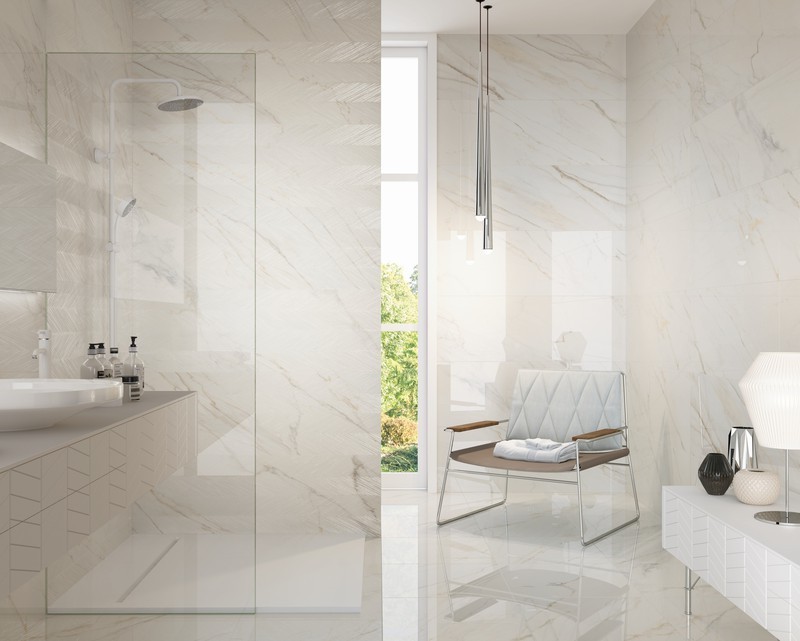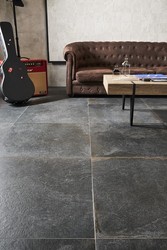How to choose the ideal tiles for your bathroom or kitchen
Choosing the right tiles for your bathroom or kitchen may seem like a simple task, but with so many options available, it's easy to feel overwhelmed. This article will guide you step-by-step to make an informed decision that combines design, functionality, and durability.
1. Define the needs of your space
Before you begin, evaluate the characteristics of the space where you will be tiling. Each area has specific requirements:
Bathrooms::
Moisture resistance: It's crucial that tiles are waterproof.
Slip resistance: Floors should be safe, especially in shower or bathtub areas.
Easy to clean: Matte or textured finishes are ideal to avoid water marks.
Kitchens:
Stain and heat resistance: Kitchen tiles should be able to withstand grease, water and high temperatures.
Durability: Kitchen floors should withstand constant traffic and possible impacts.
2. Know the types of tiles and their characteristics
The material of the tile directly influences its durability, maintenance and appearance. Here are the most common options:
Ceramic
Advantages: Affordable, available in a wide variety of designs and colors.
Recommended use: Low-traffic walls and floors.
Considerations: Less durable than porcelain.
Porcelain
Advantages: High wear resistance, waterproof, and suitable for indoor and outdoor use.
Recommended use: High-traffic floors or areas exposed to constant humidity.
Considerations: Higher price, but greater durability.
3. Size and shape matter, too
Tile size and shape can visually transform a space:
Large tiles: These reduce the number of visible joints, creating a feeling of spaciousness in small bathrooms or kitchens.
Small tiles: These are ideal for decorative details, but can be harder to clean because of the joints.
Rectangular shapes: These are trendy in modern bathrooms, especially when installed in patterns like herringbone.
Innovative shapes: Hexagonal, triangular or even custom shapes add a unique touch.
4. Aesthetics: How to Combine Design and Functionality
The design of your tiles should blend in with the overall style of your home:
Light colours: Perfect for small spaces, as they visually enlarge the room.
Dark colours: They add an elegant touch, but can make spaces feel smaller.
Bold combinations: Using tiles with patterns or vibrant colours on a feature wall can transform an ordinary space into a spectacular one.
5. Key technical factors: quality, resistance and absorption
Be sure to check the technical specifications of the tiles before purchasing:
PEI classification: Indicates the resistance to wear. PEI 1-2 is for walls, while PEI 4-5 is ideal for high-traffic floors.
Absorption coefficient: Porcelain tiles have an absorption of less than 0.5%, making them ideal for wet areas.
Slip resistance: Look for tiles with an R9 to R13 rating depending on the level of safety you need.
6. Current trends in bathroom and kitchen tiles
Stay up to date with the trends to create modern and functional spaces:
Minimalist style: Large-format tiles in neutral tones such as grey or beige.
Relieved tiles: They add texture and depth to walls without overloading the space.
Geometric designs: Ideal for modern kitchens or youthful bathrooms.
Bright colours: Emerald green, cobalt blue or terracotta are gaining popularity.
7. Calculate how many tiles you need
To avoid waste or falling short, follow this basic calculation:
Measure the total area in square metres.
Add an extra 10-15% for cuts and possible errors.
Check with the seller to confirm the exact number based on the size of the tiles.
8. Installation: Do it yourself or hire a professional
Although installing tiles can be a DIY project, in large or technical areas it is advisable to hire an expert. A professional guarantees a perfect finish and reduces the risk of costly mistakes.
In short, choosing the ideal tiles for your bathroom or kitchen not only improves the aesthetics, but also the functionality and durability of the space. Take your time to compare options, and do not hesitate to seek professional advice if you need it. In our store, you will find a wide selection of tiles for all types of projects. Click and transform your home today!






Our customers trust us
Opinions of our clients
Receive our news